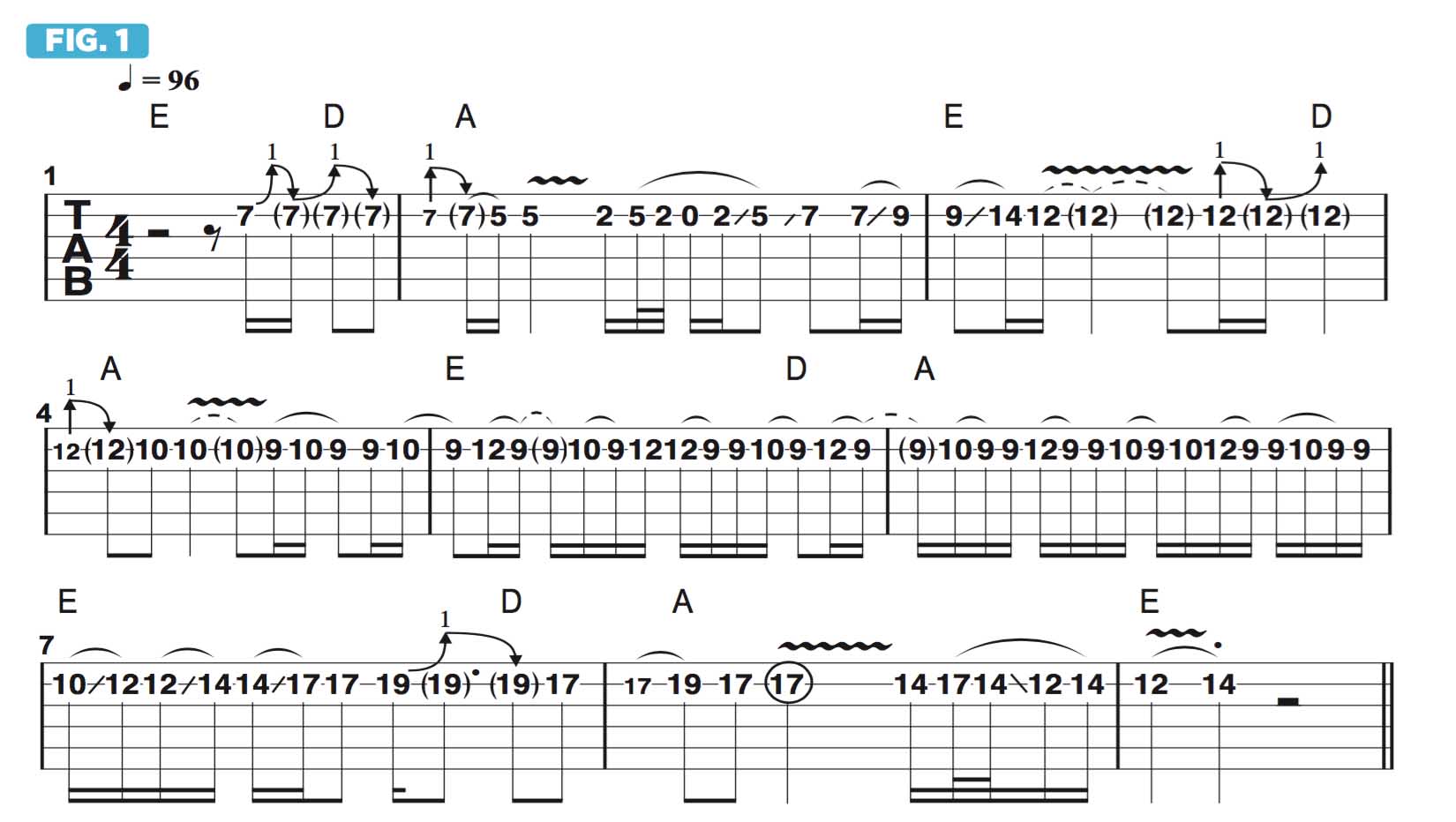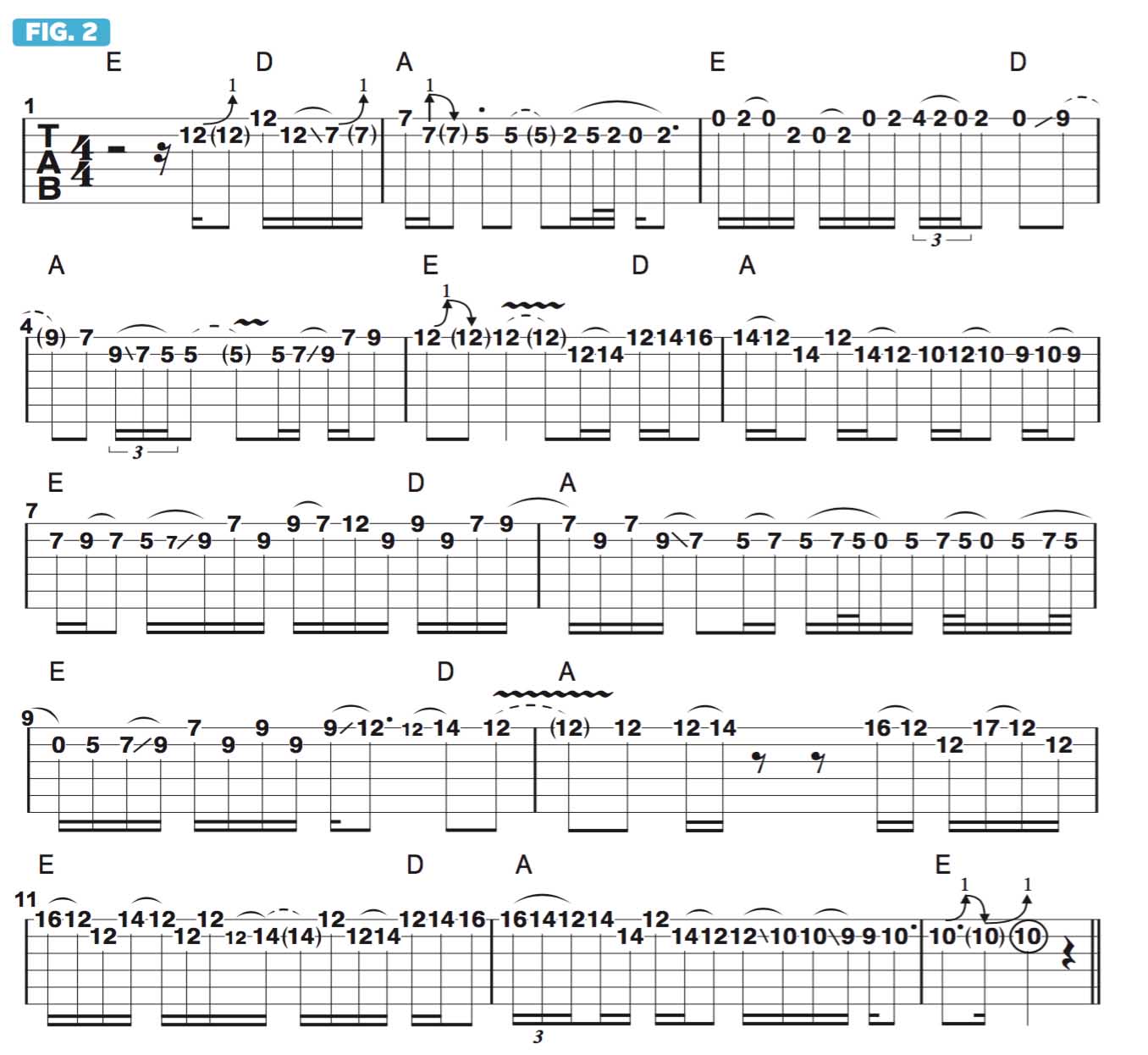How the major hexatonic scale can help you bust out of a soloing rut
Refresh your lead playing by adopting new positions on the fretboard
When it comes to improvising, many guitarists often fall into the rut of relying on familiar licks and learned scale patterns and shapes.
While having these musical building blocks ingrained into one’s memory is an essential component of building a vocabulary of reliable ideas to draw upon when soloing, no-one wants to feel constrained by habitual tendencies.
A great way to break free of old playing habits and also discover new musical territory when soloing is to momentarily limit yourself to playing on only one string or a pair or group of adjacent strings. This forces you to abandon familiar patterns and shapes and instead be guided solely by your musical ear and creativity in the spontaneous creation of a melody.
Last month, we looked at soloing over a repeating E - D - A chord progression inspired by the classic Allman Brothers Band song “Blue Sky,” using the E major pentatonic and major hexatonic scales.
We’ll stick with that progression for the solo ideas presented in this column. To review, the E major hexatonic scale is spelled E, F#, G#, A, B, C# and, intervallically, 1, 2, 3, 4, 5, 6.
This six-note scale can be viewed as either the five-note E major pentatonic (E, F#, G#, B, C#) with the addition of the 4th, A, or the full, seven-tone E major scale (E, F#, G#, A, B, C#, D#) with the exclusion 7th, D#.
Figure 1 offers an eight-bar solo played over the repeating two-bar chord progression E - D - A and performed entirely on the B string. I begin with a couple of bends from F# to G#, followed by a pull-off to E.
All the latest guitar news, interviews, lessons, reviews, deals and more, direct to your inbox!
From here, I quickly traverse the fretboard, from the 2nd fret all the way up to the 19th, via finger slides and position shifts, and incorporate lots of hammer-ons, pull-offs and bends.
When soloing on one string, you need to incorporate a lot of lateral, or “sideways,” movement in order to encompass a wide range of pitches, and these kinds of varied articulations help make for some expressive and fresh-sounding phrases.
Now let’s expand our parameter to include the high E string along with the B (see Figure 2). Here, I begin with a couple of bends on the B string that alternate with unbent notes on the high E, beginning in 12th position then quickly sliding down to 7th.
From there, I shift down to 2nd position and incorporate the open strings into a series of hammer-ons and pull-offs then proceed to ascend and descend the fretboard using position shifts and finger slides to link notes together into smooth-sounding phrases.
Guitar World Associate Editor Andy Aledort is recognized worldwide for his vast contributions to guitar instruction, via his many best-selling instructional DVDs, transcription books and online lessons. Andy is a regular contributor to Guitar World and Truefire, and has toured with Dickey Betts of the Allman Brothers, as well as participating in several Jimi Hendrix Tribute Tours.



